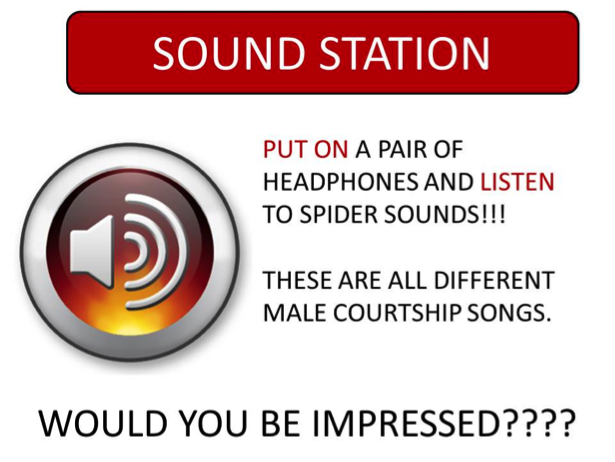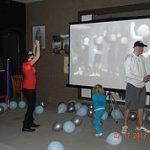Sound Station
GOAL: This station introduces the audience to the fact that spiders can “sing”.
BACKGROUND: Spiders have multiple sound-production mechanisms. For example, they can use stridulatory structures (a file and scraper on two different body parts that are rubbed together…imagine the sound produced by a plastic knife running along the teeth of a comb) often located on their pedipalps to produce vibrations that they couple to a surface. They can also use tremulation of muscles or percussion, involving hitting body parts onto a substrate. These sounds are frequently species-specific and may be coupled to particular movements during courtship.


MATERIALS:
-
Headphones attached to a device that plays spider courtship songs on a loop.
-
Copy of the spider sounds loop.
PROCEDURE:
-
Simply have head phones available on a tabletop along with the sound station instructions (see below).



